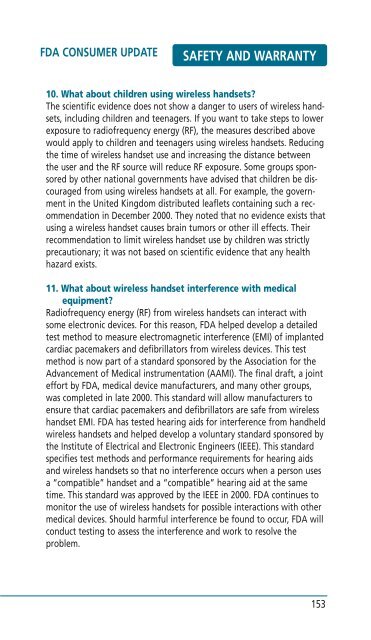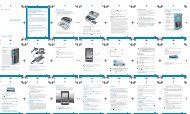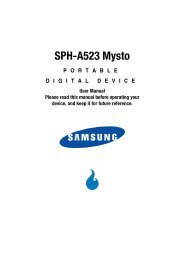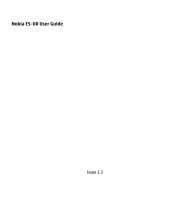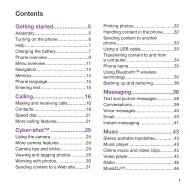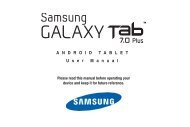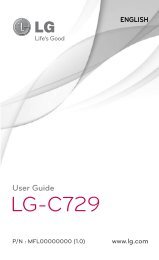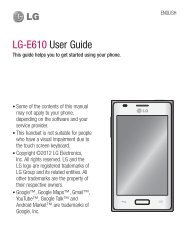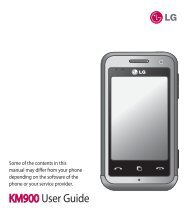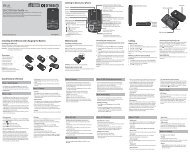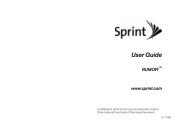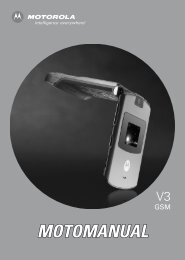Helio Ocean 2 Manual - Cell Phones Etc.
Helio Ocean 2 Manual - Cell Phones Etc.
Helio Ocean 2 Manual - Cell Phones Etc.
- TAGS
- helio
- manual
- www.cellphones.ca
You also want an ePaper? Increase the reach of your titles
YUMPU automatically turns print PDFs into web optimized ePapers that Google loves.
FDA CONSUMER UPDATE SAFETY AND WARRANTY<br />
10. What about children using wireless handsets?<br />
The scientific evidence does not show a danger to users of wireless handsets,<br />
including children and teenagers. If you want to take steps to lower<br />
exposure to radiofrequency energy (RF), the measures described above<br />
would apply to children and teenagers using wireless handsets. Reducing<br />
the time of wireless handset use and increasing the distance between<br />
the user and the RF source will reduce RF exposure. Some groups sponsored<br />
by other national governments have advised that children be discouraged<br />
from using wireless handsets at all. For example, the government<br />
in the United Kingdom distributed leaflets containing such a recommendation<br />
in December 2000. They noted that no evidence exists that<br />
using a wireless handset causes brain tumors or other ill effects. Their<br />
recommendation to limit wireless handset use by children was strictly<br />
precautionary; it was not based on scientific evidence that any health<br />
hazard exists.<br />
11. What about wireless handset interference with medical<br />
equipment?<br />
Radiofrequency energy (RF) from wireless handsets can interact with<br />
some electronic devices. For this reason, FDA helped develop a detailed<br />
test method to measure electromagnetic interference (EMI) of implanted<br />
cardiac pacemakers and defibrillators from wireless devices. This test<br />
method is now part of a standard sponsored by the Association for the<br />
Advancement of Medical instrumentation (AAMI). The final draft, a joint<br />
effort by FDA, medical device manufacturers, and many other groups,<br />
was completed in late 2000. This standard will allow manufacturers to<br />
ensure that cardiac pacemakers and defibrillators are safe from wireless<br />
handset EMI. FDA has tested hearing aids for interference from handheld<br />
wireless handsets and helped develop a voluntary standard sponsored by<br />
the Institute of Electrical and Electronic Engineers (IEEE). This standard<br />
specifies test methods and performance requirements for hearing aids<br />
and wireless handsets so that no interference occurs when a person uses<br />
a “compatible” handset and a “compatible” hearing aid at the same<br />
time. This standard was approved by the IEEE in 2000. FDA continues to<br />
monitor the use of wireless handsets for possible interactions with other<br />
medical devices. Should harmful interference be found to occur, FDA will<br />
conduct testing to assess the interference and work to resolve the<br />
problem.<br />
153


